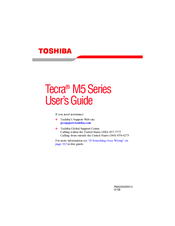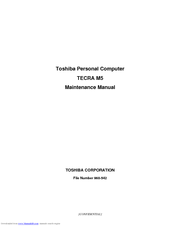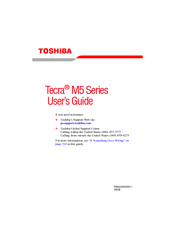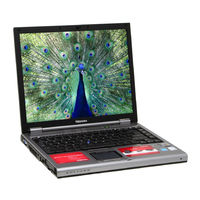Toshiba TECRA M5 Manuals
Manuals and User Guides for Toshiba TECRA M5. We have 7 Toshiba TECRA M5 manuals available for free PDF download: Maintenance Manual, User Manual, Brochure, Specifications
Advertisement
Advertisement
Toshiba TECRA M5 Specifications (2 pages)
Toshiba Laptop PC Brochure
Advertisement






